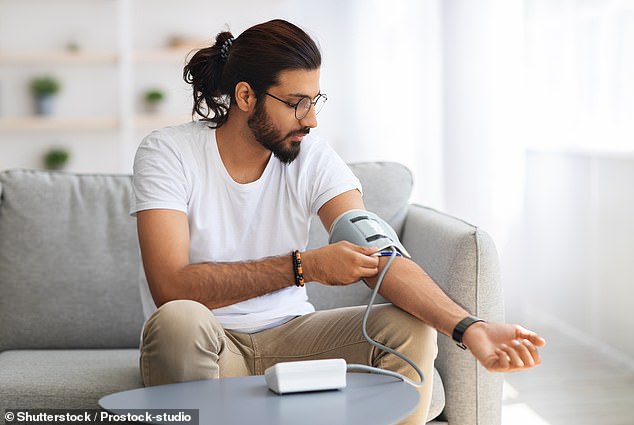Simply engaging in five minutes of physical activity each day can reduce blood pressure and aid in preventing cardiovascular issues, according to research findings.
Incorporating brief periods of physical activity into your everyday schedule – like choosing the stairs over the elevator or opting for biking – may help lower these measurements.
According to experts, making minor adjustments to daily habits, such as replacing five minutes of television viewing with five minutes of jogging, can substantially improve cardiovascular well-being.
The research indicates that exercises which increase your heartbeat, such as dancing, running, or even thorough housecleaning, provide the most significant advantages.
Researchers from University College London University College London (UCL) and the University of Sydney examined 14,761 individuals using activity trackers to investigate the connection between their everyday movements and blood pressure levels.
Throughout the day, individuals typically allocated about seven hours for sleep, ten hours engaged in sedentary activities like sitting, three hours standing, an hour of slow walking, another hour of brisk walking, and roughly 16 minutes dedicated to exercises that elevated their heart rates, including jogging and biking.


Adding an additional five minutes of physical activity that elevates your heart rate, like climbing stairs, jogging, or biking – instead of engaging in other activities – can decrease systolic blood pressure (SBP) by 0.68 millimeters of mercury (mmHg) and diastolic blood pressure (DBP) by 0.54 mmHg according to the findings.
The systolic value is the upper figure in a blood pressure measurement, indicating the force exerted when the heart pumps blood throughout the body. The diastolic value is the lower figure and reflects the pressure within the arteries as the heart relaxes between contractions.
According to the researchers, at a population level, decreasing systolic blood pressure (SBP) by 2 mmHg and diastolic blood pressure (DBP) by 1 mmHg is roughly comparable to reducing the risk of heart disease by about 10 percent.
This might be accomplished by shifting 20-27 minutes away from other activities towards exercise for the higher figure, and redistributing 10-15 minutes for the lower figure, as revealed in the study published in Circulation.
For instance, replacing 21 minutes of sitting idle, 22 minutes of standing, or 26 minutes of casual walking with activities like cycling or running could produce similar outcomes concerning systolic blood pressure.
The advantages for lowering diastolic blood pressure could be achieved by replacing 10 minutes of brisk walking, 11 minutes of inactive sitting, or 13 minutes of sleep with appropriate physical activity.
In the UK, high blood pressure stands as the primary factor for strokes and heart attacks, affecting roughly 14 million adults, among whom approximately five million remain undiagnosed.
Left unchecked, the heart might enlarge gradually because of heightened pressure, reducing its efficiency in pumping blood, which could ultimately result in heart failure.
Dr. Jo Blodgett, the lead author from UCL, stated, "Our research indicates that for the majority of individuals, engaging in exercise is more effective at lowering blood pressure compared to lighter activities like walking."
'Good news is that regardless of your physical capability, you can positively impact your blood pressure levels in a short amount of time.'
'Our exercise variable stands out because it encompasses all types of movement, including climbing stairs and brief cycling trips for errands, most of which can easily become part of everyday life.'
'Even for individuals who aren't very active, walking can still provide some advantageous effects on blood pressure.'
'However, if you aim to alter your blood pressure, increasing the load on your cardiovascular system via exercise will yield the most significant impact.'
Read more.png)